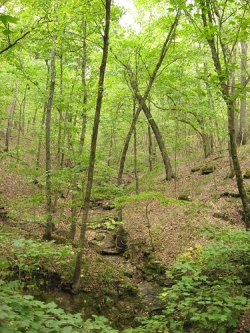 Since we have the world’s best arborists descending upon St Louis this month, we thought we’d check in with some of the local talent to get some advice on keeping trees healthy in the St Louis area. Here are 5 tips given to us by members of the St Louis Arborists Association. Oh, and the 6th tip we added on our own, courtesy of the International Society of Arboriculture.
Since we have the world’s best arborists descending upon St Louis this month, we thought we’d check in with some of the local talent to get some advice on keeping trees healthy in the St Louis area. Here are 5 tips given to us by members of the St Louis Arborists Association. Oh, and the 6th tip we added on our own, courtesy of the International Society of Arboriculture.
1. Don’t Top Trees!
Many people think they’re avoiding future potential damage to their homes by having trees especially soft-wooded trees like silver maples and Siberian elms – “topped”, or severely cropped. And, unfortunately, there are plenty of ill-trained tree cutters out there willing to do, and even promoting, this work. Topping stimulates growth of many, vigorous shoots that lead to branches with weak attachments and decay inside the topped stubs. Fast-growing branches will quickly regain the original height, but with even more hazardous branching than the original branches. Topping also results in an unnatural, freakish appearance to the tree, which would be better off removed entirely. A certified professional arborist can recommend alternative methods to topping to reduce potential tree hazards.
2. No Mulch Volcanoes
This is a practice that persists despite ongoing education efforts to eliminate it. You’ve seen them around: those mounds of hardwood mulch piled high against the trunks of landscape trees, sometimes rising to 1-2 ft.! Experts call them mulch volcanoes. They’re so pervasive in the landscape, many people probably think they represent sound tree care practice. They don’t! Mulch piled that high restricts moisture and oxygen from getting to the roots of plants, and promotes disease and insect penetration through the constantly wet bark tissue. It also provides attractive housing for voles that chew on plant roots and tree bark. Never apply mulch more than 3-4″ deep, and never pile it up against the bark of a tree. The oft-used analogy is to think of a donut, when applying your mulch.
3. Avoid Lawn Equipment and Construction Damage
Weed whackers and lawn mowers can cause seemingly insignificant wounds to tree bark, but even the tiniest wound can provide entry to an opportunistic insect or disease pathogen, especially if a tree is already stressed. And heavy construction equipment can damage trees without even touching them, by compacting all the pore space out of the root-zone soil, depriving trees of oxygen, moisture and nutrition. Mulch around trees to avoid lawn equipment damage, and protect the root zone as much as possible during construction.
4. Tree Planting Depth
Sometimes a tree just never has a chance. Poorly planted trees may thrive for a few years, maybe even 10-15 years, then suddenly and for no apparent reason, die. When dug up, it is often apparent that the trees were planted too deep to begin with. Thick roots that appear above the root flair, often circling around and girdling (choking) other roots, are indications of a tree planted too deep. Sometimes, soil can build up around the trunks of trees in the nursery, and may actually be too deep in the root ball or container. Before planting a new tree, do a little digging at the top of the root ball or container to expose the root flair (that portion of the trunk that begins to spread out). Trees should be planted so this root flair is at or slightly about ground level. When digging a hole, never dig deeper than the required depth, as loosened soil can settle, causing a newly planted tree to sink below the desired level.
5. Choose the Right Tree for the Right Spot
One of the most common reasons for premature tree death is simply the result of the wrong tree in the wrong spot. Sun-loving trees in shady conditions and understory shade trees in sunny conditions will always be stressed with potential for disease and early death. The same is true for drought tolerant or moisture-loving trees grown in soils that don’t offer those conditions. Trees that grow too big for their site, either against a building or through power lines, and thus require ongoing pruning, will always be more likely candidates for insect and disease infestation and early death. Always do a little research to discover a tree’s ideal growing conditions, and match trees to the conditions in your landscape to give them the best chance for a long, healthy life.
6. Hire a Certified Arborist for Professional Tree Care
If you’re unsure about any of the suggestions above, or need any other professional tree care service, get advice from a certified professional arborist. An arborist is a professional in the care of trees. A qualified arborist can give you sound advice and can provide the services your trees may need. Good arborists will perform only accepted practices. When choosing an arborist, look for ISA Certification and Credentials, membership in professional associations, and ask for proof of insurance. Be weary of individuals who go door-to-door offering bargains for doing tree work. Don’t be afraid to check references.
